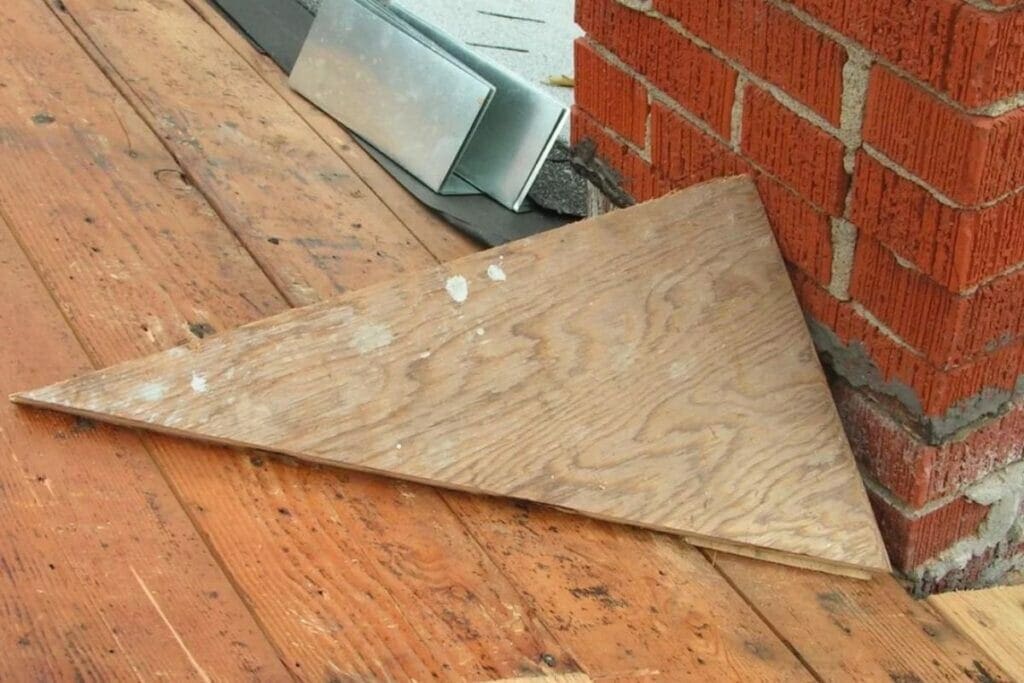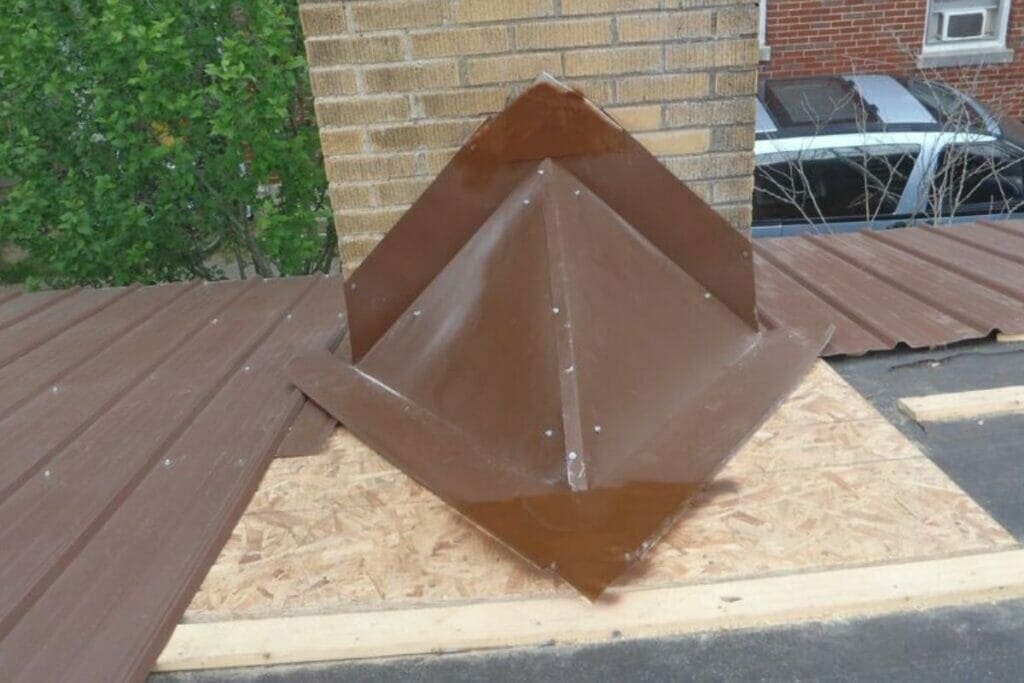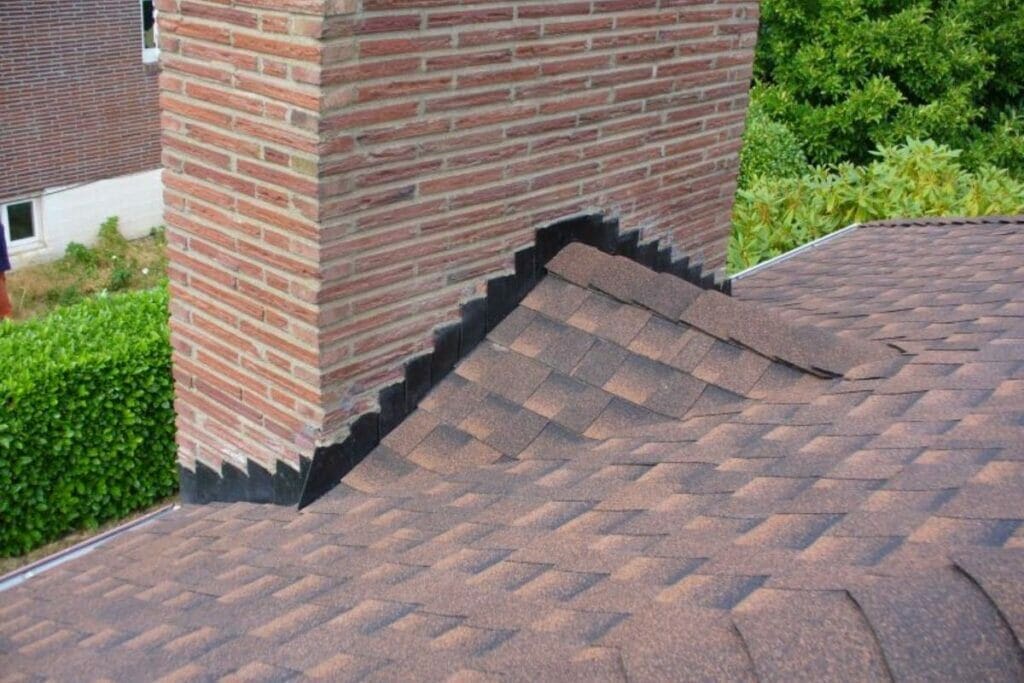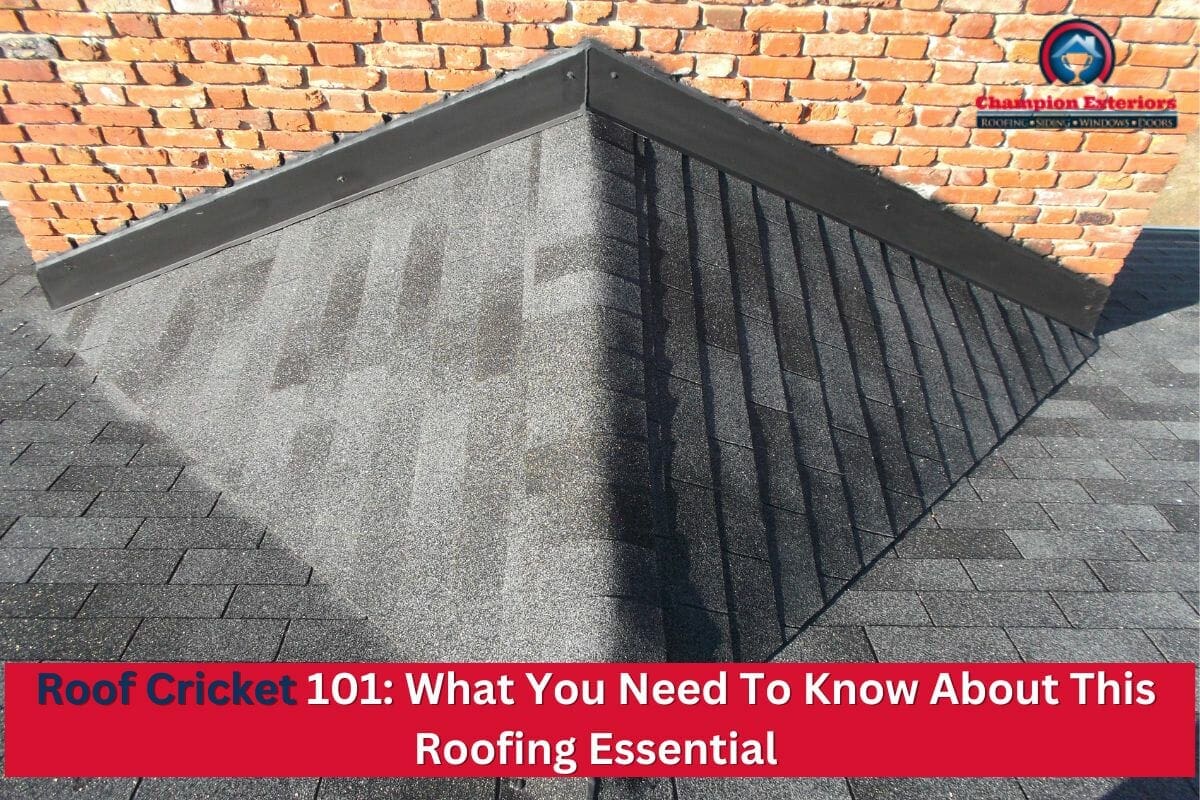Have you ever noticed a small ridge-like structure on the backside of a chimney or where two roof slopes meet? That’s a roof cricket, and it’s essential for protecting your home from water damage and related issues. In this article, we’ll explore the world of roof crickets and the materials commonly used in their construction.
What Is A Roof Cricket?
A roof cricket, also known as a chimney cricket or saddle, is a small, ridge-like structure strategically installed on the highest side of a chimney or other roof intersection.
No one really knows where its name comes from. Some believe it was named after the character Jiminy Cricket from “Pinocchio,” as people thought that Jiminy Cricket sounded like chimney cricket. Others say it was named after the shape of a cricket’s back legs, which form a similar angle to a completed chimney cricket.
The Purpose Of A Roof Cricket
1. Diverting Rainwater
The primary purpose of a roof cricket is to divert rainwater away from vulnerable areas such as chimneys and vents. By creating a sloped surface, roof crickets help channel rainwater toward the gutters.
2. Preventing Water Pooling
Pooling water on your roof can lead to significant problems like leaks, mold growth, and structural damage. Roof crickets act as a barrier against water accumulation, ensuring that rainwater is effectively drained at an angle, keeping your roof and home safe and dry.
3. Improving Roof Longevity
By safeguarding your roof from water damage, roof crickets contribute to the overall longevity and durability of your roof. A well-maintained roof cricket can add years to the lifespan of your roof.
4. Preventing Ice Dams
In regions with cold winters, ice dams can form on roofs, causing significant damage. Roof crickets help prevent the formation of ice dams by facilitating the smooth flow of melting snow and ice off the roof.
Roof Cricket Materials
Below are some of the materials used to make roof crickets.
1. Wood

Wood has been a traditional choice for roof cricket construction. It is relatively easy to work with and can be customized to fit the specific requirements of your roof. However, wood requires regular maintenance and is susceptible to rot and pest infestations.
2. Metal

Metal roof crickets, often made of copper or galvanized steel, offer excellent durability and weather resistance. They are less prone to deterioration and can withstand harsh weather conditions effectively.
3. Asphalt Shingles

Asphalt shingles are commonly used as a roofing material and can also be used to construct roof crickets. They are cost-effective and provide a seamless appearance when matched with the rest of the roof.
4. Rubber
Rubber roof crickets are a modern and eco-friendly option. They are highly flexible, making them ideal for irregular roof shapes. Rubber materials are also resistant to UV rays and weathering.
Factors to Consider When Choosing Materials for Your Roof Cricket
1. Climate and Weather Conditions
Consider the typical weather in your area. If you experience heavy rainfall or extreme temperatures, opt for materials that can withstand these conditions.
2. Roof Slope and Pitch
The slope and pitch of your roof will influence the design and size of the roof cricket. Choose materials that can be shaped accordingly.
3. Budget Considerations
Different materials come with varying price points. Set a budget and explore materials that align with your financial constraints.
4. Eco-friendly Options
If sustainability is a priority, explore eco-friendly materials like rubber or metal that can be recycled and have a lower environmental impact.
Popular Chimney Cricket Designs
Here are three types of chimney cricket designs that are commonly used to divert rainwater from chimneys.
Quarter Diamond Roof Cricket
This is a simple design consisting of a single sloping surface that creates a 90-degree angle with the chimney. While it can provide basic water diversion, it may not be as effective in areas with heavy rainfall or snowfall.
Half Diamond Roof Cricket
The half-diamond roof cricket takes the quarter-diamond design a step further by creating a steeper slope. This design offers better water diversion and is more suitable for moderate rainfall and steeper roof surfaces. It is commonly used in regions with varying weather conditions and can handle a larger volume of water runoff.
Full Diamond Roof Cricket
This design features two sloping surfaces that meet at the highest point behind the chimney. This design can handle heavy rain and snow loads, making it ideal for regions prone to severe weather conditions.
How Do You Know If You Need A Roof Cricket?
Here are five signs to watch out for:
1. Water Leaks Near Roof Penetrations
If you see water stains on your walls or ceiling close to chimneys, skylights, or vents, it is a clear sign that water is not draining properly from these areas, and you need to install a roof cricket.
2. Debris Accumulation
When debris, leaves, or other materials gather around roof penetrations, it can obstruct proper water drainage. This can lead to pooling around these spots, increasing the risk of leaks.
3. Uneven Roof Surface Around Penetration
If you notice an uneven or depressed surface around chimneys, vents, or other roof penetrations, it could indicate that water is pooling in these areas. To resolve this issue, a roof cricket needs to be installed.
4. Experiencing Ice Dams
In regions with cold winters, ice dams can form on your roof when the snow melts and refreezes at the edge of your roof. A well-installed roof cricket can help prevent ice dams by diverting water from vulnerable areas.
5. Local Building Codes
In some areas, local building codes or regulations require the installation of roof crickets on certain types of roofs. To ensure compliance with these requirements, consult a roofing professional or check with local authorities.
The Cost To Install A Roof Cricket
If you’re considering installing a roof cricket, several factors will influence the cost. For a chimney cricket, these include the size of your chimney, the type of material used for the cricket, the complexity of the installation process, and the roofing company you choose to hire. On average, the cost of installation ranges from $150 to $500. However, the cost can be as high as $6,000 for larger or more complex projects.
To receive a more accurate estimate of the cost of installation for your specific roof, we recommend contacting a reputable roofing company in New Jersey to request a quote. They will inspect your roof and chimney and provide you with a detailed breakdown of the costs and benefits of adding a roof cricket. Be sure to compare quotes from different companies to find the best deal for your budget and needs.
What’s The Difference Between Chimney Crickets And Flashing?
As you are already aware, chimney crickets refer to ridge-shaped fixtures located on the roof behind the chimney. By creating a slight peak around the chimney, the roof crickets encourage water to flow around and off the roof, which helps to prevent any potential leaks and water damage.
The purpose of installing flashing is the same as why you would install a roof cricket, but the two primarily differ in structure and size. When it comes to roofing, flashing is used to prevent water from infiltrating vulnerable areas such as joints and seams. Flashing is made of thin pieces of material, usually metal, and acts as a barrier to keep water out and direct it away from important points like valleys, walls, and skylights. There are many types of flashing, including step flashing, counter flashing, and apron flashing.
Do You Want To Install Or Repair Your Roof Cricket?
A roof cricket can be damaged for several reasons, including hail and wind storms. If your roof cricket is damaged, or if you are considering installing a new one, call Champion Exteriors today at (609) 845-3576 and consult with a roofing professional about any repair on your roof.
Frequently Asked Questions
A. If you have basic DIY skills and are comfortable working on roofs, you can install a chimney cricket yourself. However, hiring a professional roofing contractor is safer if you’re unsure or uncomfortable with the process.
A. Chimney crickets work well on sloped roofs, particularly in areas with heavy rainfall. However, they may not be necessary for flat or low-sloped roofs.


